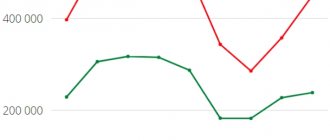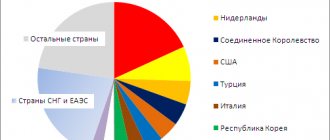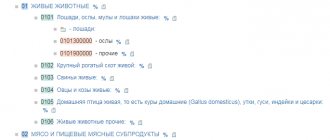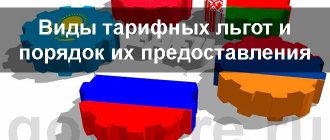Regulation of international trade
The regulation of a key area of the global economy - trade in goods and services - is carried out by the World Trade Organization (WTO). It was created in 1995 on the basis of the General Agreement on Tariffs and Trade, signed in 1947.
The WTO is the legislative and institutional basis of the international trading system, a mechanism for multilateral coordination and regulation in the field of trade in goods and services, resolution of trade disputes and development of standard foreign trade documentation.
Regulation in the global economy is based on the fact that countries voluntarily make decisions on the creation of a certain international mechanism for resolving certain problems and on sanctions applied to violators of agreements. The WTO has established trade principles that have been agreed upon by more than 150 countries.
The most important principles of the world trading system are as follows:
- trade without discrimination;
- liberalization of international trade, i.e. removal of barriers to trade (reduction of tariffs, etc.);
- application of import restriction measures only on the basis of WTO rules;
- predictability of trade policy;
- promotion of competition;
- introduction of standards, trade rules and unification of documentation.
The General Agreement on Trade in Services has been the main international document regulating international trade in services since 1994.
The Agreement specifies that international trade in services, as well as trade in goods, should be based on the principles of most favored nation treatment, consistent with the principles of the WTO.
Other varieties
In the course of justifying the tariff method, the actions of the competent authorities are regulated by the legislation of the country. According to the methods of collecting duties, they are divided into:
- ad valorem;
- specific (or special);
- mixed (cumulative)
In this case, the calculation of the duty depends on the type of rate applied during the calculation. The ad valorem or value rate is a fixed percentage. It is charged on the customs value of the goods. Considering examples of tariff methods, this type of duty can be explained using the example of a car. When transporting it across the border, you will need to pay 15% of its value, determined by customs.
In international practice, ad valorem rates account for approximately 72-75% of all duties. When making calculations, an important step is to calculate the customs value of the product. There are several methods for doing this. There is an approach that determines this value based on the cost of a transaction with identical or similar goods. Within the WTO, it is planned to unify the method for determining customs value. Within the framework of GATT, the Code for Determination of Customs Value is applied.
Special duties are flat amounts that are levied on certain goods. This type of tax is applied when transporting bulk or complex cargo. They are also used in Russia. Such duties are not directly related to the commodity price. The monetary income that the state receives from collecting them depends on the volume of goods.
The duty can also be of a combined type. Some of the products are subject to ad valorem duties, and the remainder, which exceeds the established norm, is taxed at a special rate.
Alternative fees may apply. The option is selected in which the customs fee will be maximum.
Tariff and non-tariff regulation of foreign trade
State regulation of foreign trade can be unilateral - without coordination and consultation with trading partners; bilateral - coordination of trade policies with trading countries; multilateral - when trade policy is coordinated by multilateral acts (trade agreements of the European Union countries).
There are protectionist trade policies and free trade policies.
Free trade means minimal government interference in foreign trade.
Protectionism is a government policy of protecting the domestic market from foreign competition through the use of tariff and non-tariff trade policy instruments.
Tariff methods for regulating foreign trade are based on the use of customs tariffs. All other methods are non-tariff.
A trade regime is considered relatively open when the average level of import customs duties is less than 10%, and quota taxes are less than 25% of imports.
Tariff methods of regulating foreign trade are the establishment of tariff quotas and customs duties (primarily imports are regulated).
Non-tariff methods are divided into quantitative ones - quotas, licensing, restrictions; hidden - government procurement, technical barriers, taxes and fees, requirement for the content of local components; financial - subsidies, loans, dumping (for export).
Customs tariff - a list of goods and the system of rates at which they are subject to duties.
Customs duty is a mandatory payment to the federal budget collected by customs authorities in connection with the movement of goods across the customs border.
Customs duties perform three main functions:
- fiscal;
- protectionist;
- balancing (to prevent the export of unwanted goods).
The following types of customs duties are distinguished:
1. According to the method of collection:
- ad valorem - calculated as a percentage of the customs value of taxable goods;
- specific - charged in the established amount per unit of taxable goods;
- combined - a combination of ad valorem and specific types of duties (for example, 20% of customs value, but not more than $10 per ton).
The use of ad valorem duties is associated with the subjectivity of assessments of the customs value of goods, which leaves room for abuse. Specific duties are imposed on standardized goods and have the advantage of being easy to administer. The level of customs duties greatly depends on the prices of goods.
2. By object of taxation:
- imported;
- export;
- transit (used as a means of trade war).
3. By character:
- seasonal - valid from a month to 1 year (the validity period of regular tariffs for this product is suspended);
- anti-dumping - used when importing goods at a price lower than their normal price in the exporting country, if this causes economic damage to local producers of such goods or prevents the expansion of national production of such goods;
- compensatory - imposed on the import of those goods in the production of which subsidies were used directly or indirectly.
4. By origin:
- autonomous - unilateral based on decisions of public authorities;
- conventional - based on bi- or multilateral agreements;
- preferential - on goods from developing countries to support their economic development through exports.
5. By bet type:
- permanent;
- variables - change when world prices change.
6. By calculation method:
- nominal - indicated in the tariffs;
- effective - the level of duties is determined taking into account the duties imposed on components and parts of goods.
The duty is imposed on the customs value of the goods.
The customs value of a product is the normal price of a product, determined on the open market between an independent seller and a buyer, at which it can be sold in the country of destination at the time of filing a customs declaration.
Customs value of goods imported into the USA
is calculated on the basis of the FOB price (FOB - Free on Board), i.e. the price at which they are sold in the country of dispatch.
The customs value of the goods is assessed on the basis of CIF (CIF - Cost, Insurance, Freight), i.e. the duty on the price of the goods includes the cost of transportation to the port of destination and the price of insurance.
In the Russian Federation, the customs tariff is based on the system of classification of goods accepted in international practice.
The customs value is determined by the declarant under the control of the customs authorities. The main method for determining customs value is the method based on the transaction price of imported goods.
When determining the customs value, the transaction price, in addition to the price of the goods itself, includes:
- costs of delivering goods to the place of import;
- buyer's expenses;
- the price of raw materials, materials, etc., provided by the buyer to the seller for the production of export goods;
- royalties for the use of intellectual property that the buyer must make as a condition of the sale of imported goods;
- the seller’s income from subsequent resales, transfer or use of imported goods in the territory of the Russian Federation.
Tariff escalation - increasing the level of customs taxation of goods as the degree of their processing increases - is used to protect national producers of finished products and stimulate the import of raw materials and semi-finished products. Developing countries are characterized by a market for raw materials, the customs duties of which are minimal compared to finished goods.
As a result of the introduction of a tariff by any country, economic effects of redistribution (income and redistribution effects) and losses (protection and consumption effects) arise.
The income effect is an increase in budget revenues: there is a transfer of income from the private sector to the public sector.
The redistribution effect is the redistribution of income from consumers to producers of products that compete with imports.
The protection effect is the economic loss of a country resulting from the need to produce domestically, under the protection of a tariff, an additional quantity of goods at higher costs.
The consumption effect occurs as a result of a reduction in the consumption of a product due to an increase in its price in the domestic market.
A large country is characterized by the terms of trade effect - the redistribution of income from foreign producers to the budget of this country as a result of improved terms of trade.
An import tariff has a potential impact on the economy of a large country if the terms of trade effect in value terms is greater than the sum of the losses resulting from the lower efficiency of domestic production relative to world production and the reduction in domestic consumption of the good. Only a large country can influence the level of world prices and secure some economic benefit for itself by improving its terms of trade. In any case, an optimal tariff rate is required.
The optimal tariff rate is the tariff level that maximizes national economic welfare.
This rate is always relatively small. The optimal tariff leads to economic gain for one country and to losses for the world economy as a whole, since it serves to redistribute income from one country to another.
Countries may use tariff quotas, a type of variable customs duty whose rates depend on the volume of goods imported. When importing within a certain quantity, it is taxed at the basic intra-quota tariff rate; when exceeding a certain volume, imports are taxed at a higher, above-quota tariff rate.
Proponents of tariffs justify their introduction by the need to protect fragile sectors of national industry, stimulate domestic production, increase budget revenues and ensure national security. Opponents argue that tariffs reduce a country's economic well-being and undermine the global economy, leading to trade wars, increasing taxes, reducing exports and reducing employment.
The administrative form of non-tariff state regulation of trade turnover is quantitative restrictions, including quotas (provisioning), licensing and voluntary export restrictions.
A quota is a quantitative measure of limiting the export or import of a product of a certain quality or amount for a certain period of time.
Based on their focus, quotas are divided into export and import; in terms of coverage - global, which are established for a certain period of time to ensure the required level of domestic consumption, and individual - established within the framework of a global quota, which are temporary.
Licensing is the regulation of foreign economic activity through permits issued by government agencies for the export or import of goods in specified quantities for a certain period of time.
Licenses can be one-time - for a period of up to 1 year per transaction; general - for a period of up to 1 year without limiting the number of transactions; global - for a certain period for the import or export of goods to any country in the world; automatic (issued immediately).
The mechanisms for distributing licenses are varied: auctions; a system of explicit preferences - assigning licenses to firms according to their share of imports; distribution of licenses on a non-price basis - the government issuing licenses to the most efficient firms.
Voluntary export restriction is a quantitative restriction based on a commitment to limit or not expand the volume of exports under political pressure from the importer.
Methods of hidden protectionism include: technical barriers - the requirement to comply with national standards; internal taxes and fees; government procurement policy (requirement to purchase goods from national firms); requirement for the content of local components (establishes the share of the product produced by national producers for sale on the domestic market); requirement to comply with certain sanitary and hygienic standards, etc.
The most common financial methods of trade policy are subsidies, lending and dumping.
Subsidies are cash payments aimed at supporting national exporters and indirectly discriminating against imports. Subsidizing domestic production is considered a preferable form of tax policy compared to import tariffs and quotas.
An extreme case of export subsidies is dumping - the promotion of goods to foreign markets by reducing export prices below the normal price level existing in importing countries.
Thus, state regulation of foreign trade involves the use of:
- free trade policy, opening the domestic market to foreign competition (liberalization);
- protectionist policies that protect the domestic market from foreign competition;
- moderate trade policy, combining elements of free trade and protectionism;
- simultaneous implementation of free trade and protectionism policies, but in relation to different products.
Within the WTO, the recognized basis of international trade is the most favored nation treatment.
Duty functions
Customs tariff methods of regulation perform a number of functions. It is assumed that domestic prices for products should be higher than those of imported goods. In this case, competition between both categories of goods will be equal. Therefore, the establishment of a duty performs a regulatory function.
A duty, like any other tax, increases the cost of a product. This reduces its competitiveness. In order for this role of duties to be fulfilled in full, the policy in the field of foreign trade relations must be flexible. Tax rates are subject to constant revision. Their changes are influenced by external conditions that develop on the world market, as well as the internal interests of the country. Only variable-type duties are subject to revision. Their rates change in cases determined by the state. This, for example, could be changes in prices on the domestic or world market, subsidies, etc.
To a greater or lesser extent, all states use duties to replenish the country's budget. Therefore, such taxes perform a fiscal function. The state budget revenue is partially generated from the duty. In Russia, its contribution reaches 30% of the total mass.
Tariff methods of regulating foreign trade also perform a pricing function. Due to the application of duties, the cost of imported goods increases. This is an instrument of discriminatory policies that are applied to other countries. This creates a cost barrier that will cause prices for foreign goods to be higher than for domestic ones. Also, using this approach, the state sets prices for products from different countries. For some, the duties will be higher, making the products less attractive to consumers.
This function allows you to regulate the volume of imports and exports. With the help of duties, the state influences the rate of profit of certain sectors of the economy. It also allows you to control the pace of development and accumulate capital within the country. Not only the quantity of products crossing the customs border is regulated, but also the structure of imports. With the development of the country's economy, the role of the fiscal function of customs duties decreases.
State regulation of international trade in services
Trade in most services accompanies trade in goods and is therefore subject to the restrictions imposed on trade in goods.
There are various market access controls—trade policy instruments that restrict or prohibit foreign firms producing services from operating in the local market.
Measures to regulate market access in most cases take the form of quantitative restrictions and include:
- restrictions on trade in services (assigning insurance, cargo transportation and other services to national companies, which, in the absence of competition, provide services at inflated prices);
- restrictions on the creation in the domestic market of branches of foreign companies providing services (banks, travel companies, etc.);
- restrictions on the movement of service providers (in the form of state licensing of labor imports, testing of specialists, etc.);
- restrictions on the movement of service consumers (limitation of tourist visas, movement of tourists along specially established routes, etc.)
- restrictions on the use of the national regime (regime of economic relations between countries):
- exemptions from the national regime (domestic economic policy instruments that discriminate against foreign service providers in the domestic market compared to local ones);
- providing price advantages to local producers;
- providing foreign producers with less favorable conditions than local ones (for example, increased taxes on the operations of foreign banks, etc.).
Efforts to liberalize international trade in services are being made at the level of international organizations, within individual industries and at the bilateral level between individual countries.
conclusions
International trade in goods is subject to an array of rules and requirements under applicable national and international law. Tariff and non-tariff regulation of international trade are tools for protecting the domestic market, as well as creating competitive conditions for national business entities in international markets.
When performing import-export transactions, it is important to correctly determine what customs tariff (duty) will be applied to the transaction, as well as the range of non-tariff requirements (sanitary and phytosanitary, depending on the characteristics of the product). Competent implementation of tariff and non-tariff regulation of international trade will ensure the proper fulfillment of contractual obligations, and will also save money on repeated procedures if mistakes were made initially.
Author: Airapetov Manuel, senior lawyer at the law firm SDM Partners.
Method for determining NMCC
The NMCC tariff method is used if it is necessary to purchase or sell goods that are subject to regulation by government agencies. This approach involves setting a minimum contract price. It is regulated by Article 22 44 of the Federal Law. The tariff method is used when purchasing goods, services or works. The relevant government agencies control this process.
The contract price is determined in accordance with the regulated tariff. The efficiency of using budget funds depends on the correctness of the calculation. Also, such a procedure allows you to make the appropriate purchases.
The initial maximum contract price is determined in accordance with the tariff method under 44-FZ. Such services include:
- Drainage and water supply.
- Heat supply.
- Electric power industry.
- Gas supply.
- Telecommunications and mail.
It is not recommended to use this method of tariff regulation if the cost of goods or services is higher than the norm approved by law.
Sample calculation
The tariff method for determining NMCC involves the use of a simple formula. To understand the principle of using this approach, it is worth considering the calculation using an example. The formula for determining the tariff looks like this:
NMTsK = OT * T, gdn OT – the volume of goods that are planned to be purchased (this can also be work and services), T – the tariff established by the relevant government bodies.
The quantity of goods is measured in monetary terms. Tariff method NMCC can apply rates established by municipal legal acts. To understand the features of the calculations, you need to consider the procedure with an example.
So, let’s say the customer of the work or services is a government organization. It announces an open competition during which a heat energy supplier is selected. It is supplied to the site in the form of hot water. The tariff established by law at the time of conclusion of the contract was 2880.79 rubles. per 1 Gcal of thermal energy. This price does not include VAT.
The institution will purchase 731.9 Gcal. Therefore, the contract amount is:
731.9 x 2880.79 = 2,487,971.24 rubles.
In this case, the contract cannot be concluded for a period longer than the tariff rate in effect. As soon as it changes, you need to renew the contract. A new purchase is being organized. Therefore, the quantity of products that are purchased using this tariff method is determined in a special way. A special technique is used for this. It is established by law.







